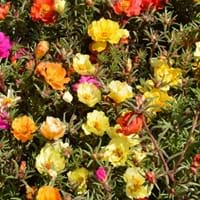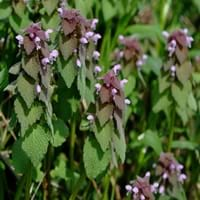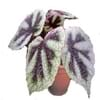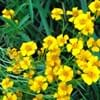Type
Flowering Plants
Flowering Plants
Origin
South America
World/Pandemic, Europe, Asia
Types
Not available
Not Available
Habitat
gardens, Roadsides, Waste areas
Cultivated Beds, gardens
USDA Hardiness Zone
5-11
4-8
AHS Heat Zone
12 - 1
Not Available
Sunset Zone
A1, A2, A3, H1, H2, 1a, 1b, 2a, 2b, 3a, 3b, 4, 5, 6, 7, 8, 9, 10, 11, 12, 13, 14, 15, 16, 17, 18, 19, 20, 21, 22, 23, 24
Not Available
Habit
Prostrate/Trailing
Spreading
Flower Color
Red
Purple, Pink
Flower Color Modifier
Bicolor
Bicolor
Fruit Color
Not Available
Not Available
Leaf Color in Spring
Green
Purple, Dark Green
Leaf Color in Summer
Green
Purple, Dark Green
Leaf Color in Fall
Green
Not Available
Leaf Color in Winter
Light Green
Light Green
Leaf Shape
Needle like
Oval to egg shaped
Plant Season
Summer, Fall
Not Available
Sunlight
Full Sun
No Shade, Partial shade
Growth Rate
Very Fast
Very Fast
Type of Soil
Loam, Sand
Clay, Loam, Sand
The pH of Soil
Neutral, Alkaline
Acidic, Neutral, Alkaline
Soil Drainage
Well drained
Average
Bloom Time
Indeterminate
Spring, Late Spring
Tolerances
Drought, Heat Tolerance
Drought
Where to Plant?
Container, Ground, Pot
Ground
How to Plant?
Seedlings
Root Division, Seedlings
Plant Maintenance
Low
Medium
Watering Requirements
Average Water Needs
Average Water Needs, Do Not over Water, Requires regular watering
In Summer
Lots of watering
Lots of watering
In Spring
Moderate
Moderate
In Winter
Average Water
Average Water
Soil pH
Acidic, Neutral, Slightly Acidic
Slightly Acidic
Soil Type
Well drained
Clay, Moist, Well drained
Soil Drainage Capacity
Well drained
Moist, Well drained
Sun Exposure
Full Sun
No Shade, Partial shade
Pruning
Remove damaged leaves, Remove dead branches, Remove dead leaves, Shearing
Pinch or prune as they grow to promote branching and bushiness, Remove deadheads
Fertilizers
Requires high amount of nitrogen
All-Purpose Liquid Fertilizer
Pests and Diseases
Aphids, Botrytis Blight, Brown Spots, Gray mold, Root rot, Stem rot
Not Available
Plant Tolerance
Drought, Heat Tolerance
Drought
Flower Petal Number
Semi-Double
Single
Fragrant Bark/Stem
No
Yes
Foliage Texture
Fine
Medium
Foliage Sheen
Matte
Matte
Attracts
Butterflies
Not Available
Allergy
Not Available
no allergic reactions
Aesthetic Uses
Beautification, Bouquets, Cottage Garden, Ground Cover, Showy Purposes
Ground Cover
Beauty Benefits
Skin Problems
Not Available
Environmental Uses
Air purification
Air purification
Medicinal Uses
Depurative, Insect Bites, Liver problems, Snakebite, Swelling
Astringent, Diaphoretic, Diuretic, Purgative, Styptic
Part of Plant Used
Flowers, Leaves, Stem, Whole plant
Flowers, Leaves
Other Uses
Showy Purposes, Used As Food, Used for its medicinal properties
Employed in herbal medicine, Used in Homeopathy
Used As Indoor Plant
No
No
Used As Outdoor Plant
Yes
Yes
Garden Design
Cottage garden, Edible
Groundcover
Botanical Name
PORTULACA grandiflora
LAMIUM purpureum
Common Name
Moss Rose, Portulaca, Sundial Scarlet Portulaca
Purple Archangel, Purple Deadnettle, Red Deadnettle
In Hindi
Portulaca
Purple Deadnettle
In German
Portulak
Lila Taubnessel
In French
portulaca
Violet Ortie blanche
In Spanish
Portulaca
Púrpura Deadnettle
In Greek
Portulaca
μωβ Deadnettle
In Portuguese
Portulaca
Roxo Deadnettle
In Polish
Portulaca
Jasnota purpurowa
In Latin
Portulaca
Purpura Deadnettle
Phylum
Magnoliophyta
Magnoliophyta
Class
Magnoliopsida
Magnoliopsida
Order
Caryophyllales
Lamiales
Family
Portulacaceae
Lamiaceae
Clade
Angiosperms, Core eudicots, Eudicots
Angiosperms, Asterids, Eudicots
Tribe
Not Available
Not Available
Subfamily
Not Available
Lamioideae
Season and Care of Portulaca and Purple Deadnettle
Season and care of Portulaca and Purple Deadnettle is important to know. While considering everything about Portulaca and Purple Deadnettle Care, growing season is an essential factor. Portulaca season is Summer and Fall and Purple Deadnettle season is Summer and Fall. The type of soil for Portulaca is Loam, Sand and for Purple Deadnettle is Clay, Loam, Sand while the PH of soil for Portulaca is Neutral, Alkaline and for Purple Deadnettle is Acidic, Neutral, Alkaline.
Portulaca and Purple Deadnettle Physical Information
Portulaca and Purple Deadnettle physical information is very important for comparison. Portulaca height is 10.20 cm and width 20.30 cm whereas Purple Deadnettle height is 10.20 cm and width 15.20 cm. The color specification of Portulaca and Purple Deadnettle are as follows:
Portulaca flower color: Red
Portulaca leaf color: Green
Purple Deadnettle flower color: Purple and Pink
- Purple Deadnettle leaf color: Purple and Dark Green
Care of Portulaca and Purple Deadnettle
Care of Portulaca and Purple Deadnettle include pruning, fertilizers, watering etc. Portulaca pruning is done Remove damaged leaves, Remove dead branches, Remove dead leaves and Shearing and Purple Deadnettle pruning is done Pinch or prune as they grow to promote branching and bushiness and Remove deadheads. In summer Portulaca needs Lots of watering and in winter, it needs Average Water. Whereas, in summer Purple Deadnettle needs Lots of watering and in winter, it needs Average Water.





